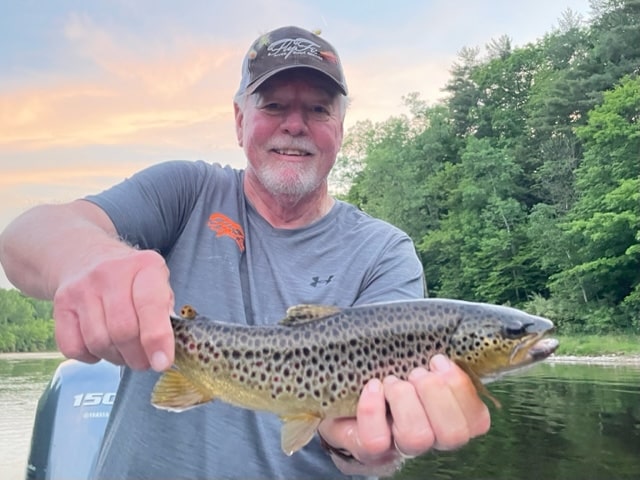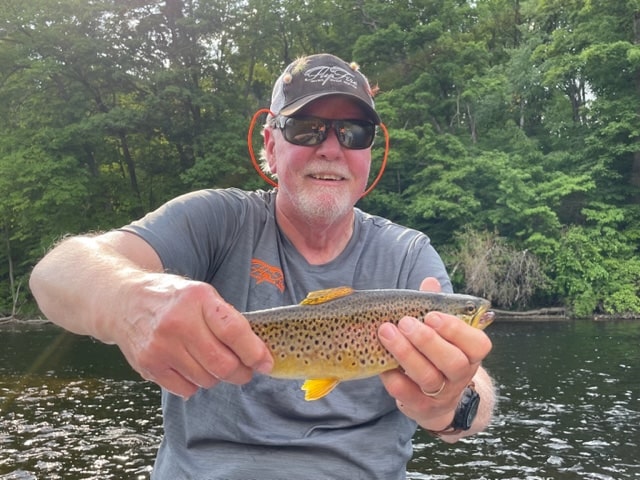
Here he is! The man, the myth, the legend! Bert from Rodney, MI holding a beautiful Muskegon river brown trout that absolutely smashed a dry fly!
What makes dry fly fishing for trout on the Muskegon so much fun? It’s targeting and timing the rises! More times than not, trout will go into a feeding pattern where they breach the waters surface to feed on flies as they drift over their heads in specific time intervals and in their feeding lanes.
By timing the intervals between the rises, is a great way to improve your odds of getting trout to strike your dry fly. What usually starts out with sporadic rises, quickly turns into more consistent and frequent rises, especially as the sun starts to set and trout start to feed more frequently.
Hold your cast. Be patient. Wait for that trout to start rising more frequently and time the intervals between rises.
Once you have the timing down, start casting. Focus on landing your fly just a few feet up stream from where he rises up to feed. Stay focused, that trout will remain in that same feeding lane throughout the night. Concentrate on the time intervals between the rises, and keep making that cast with the fly landing softly just up in front of his next rise.
Getting the timing down before his next rise, gives you such a much better chance of triggering that trout to strike your dry fly! The more you stay consistent with the timing of your cast just before his next rise, the better chance you have of hooking that trout.
Timing the rise is such an effective and exciting way to hook trout with dry flies! You’re actively stalking the trout and casting to him in his feeding lane. To see that trout erupt out of the water after your fly lands and feel that initial pull on the rod when he takes it, is like hitting a Grand Slam with 2-outs in the bottom of the ninth! Nothing beats it!!

Dry fly fishing for trout has been on fire past few weeks with caddis, cahills, blue wing olives, and drake hatches taking center stage. The low clear water is causing the trout to look up more than ever as the red tail sucker spawn has come to an end.
The hotter air temps are raising the water temps and seem to have sparked the native brown and rainbow trout into a feeding frenzy with action throughout the day in various spots on the river.
post by: jon fortuna
